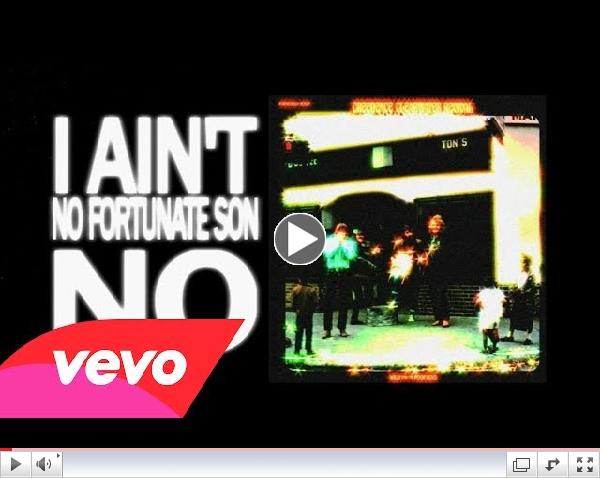 | | Creedence Clearwater Revival - Fortunate Son |
|

NEW CCDS Pamphlet
on Climate Change.
|
Blog of the Week...
The Hampton Institute 
|

New CCDS Book Reporting on Vietnam
|
|
Radical Jesus:
A Graphic History of Faith 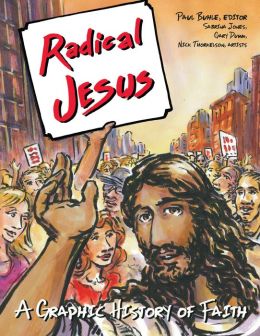 By Paul BuhleHerald Press By Paul BuhleHerald Press
|

Want to Know what CCDS has
been doing...Check it Out!
|
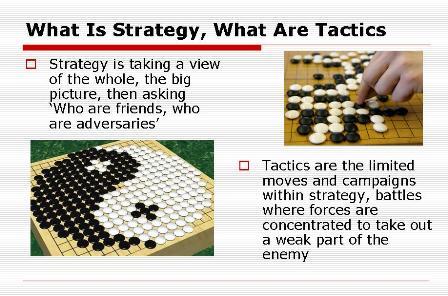 Keep On Keepin' On Keep On Keepin' OnHating the 'Middle Class,' Why Socialists Run in Elections, Strategy and Tactics Slide Slow, Class and Privilege, the Green New Deal ...and other Short Posts on Tumblr by Carl Davidson
|

Edited by Carl Davidson Revolutionary Youth and the New Working Class: The Praxis Papers, the Port Authority Statement, the RYM Documents and other Lost Writings of SDS Changemaker, 273pp, $22.50
For the full contents, click the link and view 'Preview' under the cover graphic.
|
 The new annual edition of our journal of discussion and analysis is now out. More than 170 pages, it includes 14 articles on strategy austerity, organizing, and the right. Cost is $10 plus shipping. Or get one by becoming a sustainer. Click the title to buy it directly. The new annual edition of our journal of discussion and analysis is now out. More than 170 pages, it includes 14 articles on strategy austerity, organizing, and the right. Cost is $10 plus shipping. Or get one by becoming a sustainer. Click the title to buy it directly.
|
|
By Randy Shannon, CCDS

"Everyone has the right to work, to free of employment, to just and favorable conditions of work and to protection against unemployment."
- United Nations Universal Declaration of Human Rights, December 10, 1948
I. Introduction
The "Great Recession" that began in 2007 has caused the greatest percent of job losses since the Great Depression of 1929. This crisis is the end of an era of unrestrained 'neo-liberal' capitalism that became public policy during the Reagan administration. The crisis marks a new level of instability with the growth of a global financial elite that targeted US workers and our trade unions after World War II.
|
|
Order Our
Full Employment Booklets
 |
...In a new and updated 2nd Edition
Capitalism may well collapse under its own excesses, but what would one propose to replace it? Margaret Thatcher's mantra was TINA...There Is No Alternative. David Schweickart's vision of "Economic Democracy" proposes a serious alternative. Even more fundamentally, it opens the door to thinking about alternatives. His may or may not turn out to be the definitive "successor system," but he is a leader in breaking out of the box. |
 by Paul KrehbielAutumn Leaf Press, $25.64
by Paul KrehbielAutumn Leaf Press, $25.64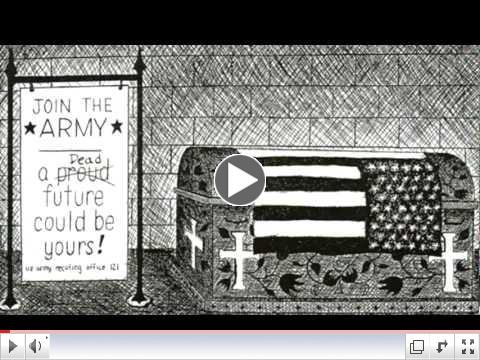 | | Shades of Justice Video: Bringing Down a President, Ending a War |
|
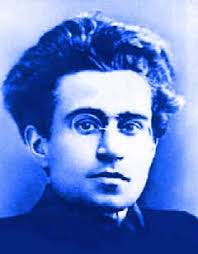 By Giuseppe Fiori
Verso, 30 pages
|

Essays on Mondragon, Marx, Gramsci
and the Green and Solidarity Economies |
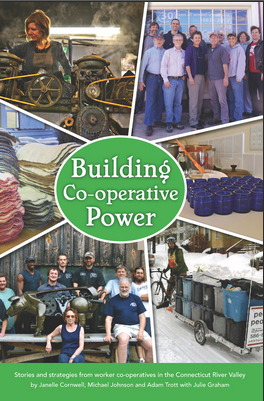
The Story of Workers Coops
in the Connecticut River
Valley Today.
Coauthors: Janelle Cornwell
(Worcester State University),
Michael Johnson (Grassroots
Economic Organizing Newsletter)
and Adam Trott (Valley Alliance
of Worker Co-operatives and
Collective Copies)
|
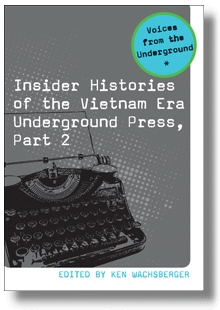
- Foreword by Susan Brownmiller
- Preface by Ken Wachsberger
$37.50 + $6 shipping
|
|
Discussion Documents for a Militant Movement
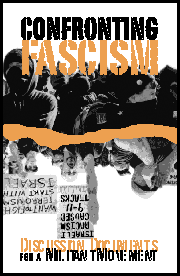
By Don Hamerquist
|
|
|
|
An Invitation to CCDSers and Friends...
 New Battles New Battles
Emerge After
The Election
We're the Committees of Correspondence for Democracy and Socialism...Do you have friends who should see this? Pass it on...Do you have a blog of your own? Others you love to read every day? Well, this is a place where you can share access to them with the rest of your comrades. Just pick your greatest hits for the week and send them to us at carld717@gmail.com! Most of all, it's urgent that you support low-wage workers, oppose militarized police, the war on Gaza, defend voter rights, plan for 2014 races now, oppose austerity, support the 'Moral Mondays' in North Carolina, the fight for the Green New Deal, a just immigration policy and the Congressional Progressive Caucus' 'Back to Work Budget'! We're doing more than ever, and have big plans. So pay your dues, make a donation and become a sustainer. Do it Now! Check the link at the bottom... |
Truckers Strike at LA Port for Workers Rights

By Peter Dreier Huffington Post
More than 40 percent of the goods that come into the United States from overseas come through the twin ports of Los Angeles and Long Beach. That fact alone gives thousands of truck drivers who haul those goods from the ports to warehouses considerable leverage with big companies (like Walmart, Cosco, and Home Depot) whose goods are mostly made in Asia as well as with the shipping companies, the municipal Harbor Commission which oversees the port, and the trucking companies who employ the drivers.
If the truckers shut down the port, they can disrupt a huge part of the U.S. economy that depends on global trade. That's particularly true during this time of year, when more cargo arrives at the ports in anticipation of the gift-buying holidays.
The trucking companies routinely put profits over people. For example, the Harbor Trucking Association (HTA), which represent the companies, is asking the Federal Motor Carrier Safety Administration (FMCSA) to relax the safety rules that dictate the amount of sleep truckers must have. The HTA wants to lift the requirements so that employers can extend drivers' hours to accommodate the increased shipping loads prior to the holidays.
No worker wants to go on strike, but several major trucking companies at these L.A. and Long Beach ports have made working conditions so miserable that many drivers believe they have no choice. So the drivers will be out of their trucks and onto the picket lines this week.
In July, drivers went on strike to protest the companies' chronic unfair labor practices. After five days of picketing that dramatically impacted port operations and garnered international media attention, Los Angeles Mayor Eric Garcetti brokered a "cooling off" period that included an agreement by three trucking firms -- Total Transportation Services (TTSI), Pacific 9 Transportation (Pac 9), and Green Fleet Systems -- to accept all drivers back to work without retaliation. But the trucking companies went back on their pledge to Garcetti. They continued retaliating against drivers who have complained about unfair conditions and who want a stronger voice in their workplaces. They even fired several of the most outspoken truckers.
So now the drivers are ready to go back on the picket lines and to shift their protests from the offices of the trucking companies to the dockside terminals where longshore workers move containers from ships to trucks. ...(Click title for more)
|
|
Big Hospitals Get Tax Breaks for Community
Benefits - But Don't Earn Them 
Kaiser nurses strike over patient care -- as Kaiser shortchanges care for low-income people
Editor's note: As Kaiser nurses walk the picket lines (we will be reporting more on the strike later this week) it's worth noting that these "nonprofit" hospitals aren't all about the public good.
By Anna Challet
New American Media
NOVEMBER 13, 2014 - Not-for-profit hospitals, like Kaiser in San Francisco, receive tax breaks in exchange for providing benefits to their communities - services like charity care for people who are uninsured. But are the not-for-profit hospitals in California providing enough of these services to earn their tax breaks?
Not by a long shot, according to a new study by The Greenlining Institute.
According to the study, not-for-profit hospitals in the state take in over twice as much money in tax breaks as they spend on community benefits. And an investigation into the community benefit spending of three large hospitals in San Francisco - Kaiser, St. Mary's Medical Center and California Pacific Medical Center (CPMC) - revealed shoddy data reporting on where the money is going.
"It's an unfair exchange. Hospitals receive about $3.2 billion in tax breaks because of their not-for-profit status, but from what we can see at the state level, there's only about $1.4 billion going back into the community through their community benefits," says Carla Saporta, Greenlining's health policy director and one of the study's authors.
Additionally, hospitals are required to provide documentation that demonstrates how they're spending their community benefit dollars, and the data is supposed to be publicly available. But when Greenlining tried to access that information, they found most of it to be incomplete or totally unclear.
"You can't even really follow the money and understand how they're really spending their community benefits dollars," says Saporta.
Kaiser, for example, claims just over $24 million in community benefit spending, but accounts for less than $600,000 of that. Sutter Health's five CPMC campuses claim over $167 million in community benefit, but Greenlining found the financial details to be largely inconsistent and incomplete....(Click title for more)
|
|
RAUL GRIJALVA, Chair of Congressional Progressive Caucus
By Dave Jamieson
Huffington Post
WASHINGTON, DC Nov. 10, 2014 - Republican leaders have warned President Barack Obama that pursuing more executive actions after last week's midterm drubbing would be like playing with fire. But Rep. Raul Grijalva (D-Ariz.), co-chair of the Congressional Progressive Caucus, said on Monday that unilateral action by the president on economic issues is more necessary than ever.
"The president is in a pivotal position to go assertively with executive orders to create a political balance and an economic balance," Grijalva told reporters on a conference call. "I'm one member that urges them to use that as a balancing tool and a leadership tool in these next two years."
Grijalva and his fellow caucus co-chair, Rep. Keith Ellison (D-Minn.), are putting their weight behind two proposals in particular: one executive order that would give federal contracting preference to firms that pay a living wage of $15 and provide basic benefits to workers, and another guaranteeing that contractors wouldn't interfere with worker efforts to unionize. Branded as "More Than the Minimum," the proposals are being pushed by Good Jobs Nation, a labor group backed by the Change to Win union federation, and other progressive allies.
Ellison and Grijalva, along with Good Jobs Nation, already have a couple of executive-action victories under their belts. They successfully pressured the White House to institute two executive actions that were signed by the president earlier this year - onesetting a minimum wage of $10.10 for federal contractors, and another that would effectively bar firms that have committed wage theft against their workers from receiving federal contracts.
Most of the president's unilateral moves on the economy have been panned by congressional Republicans. After Democrats were trounced in elections around the country last week, House Speaker John Boehner (R-Ohio) warned Obama against formulating executive action on immigration reform, saying he was "going to burn himself if he continues down this path."
Grijalva suggested that the president and fellow Democrats would burn themselves if they didn't. The way for Democrats to regain power, the congressman argued, is by aggressively pursuing liberal economic policies that have broad support, like raising the minimum wage and extending sick leave to more workers. Despite the Republican gains, ballot initiatives based on those issues passed by wide margins last week, including in red states.
"The American people, I think, voted against the lack of an economic agenda for working families, against not having a clear vision of what we want and where the government should be in promoting income equality," Grijalva said of the Democratic loss....(Click title for more)
|

By Seung Min Kim
Progressive America Rising via Politico
Nov 12, 2014 - The Congressional Progressive Caucus is laying out what it wants from President Barack Obama on immigration executive action, including shielding 7 million undocumented immigrants from deportation - a larger figure than the White House's expected plans would cover.
Democratic Reps. Raul Grijalva of Arizona and Keith Ellison of Minnesota say in a memo that Obama "should act swiftly and comprehensively. We should not force deserving individuals and families to wait any longer."
The 7 million figure comes from a pair of calculations by the Migration Policy Institute, a nonpartisan think tank in Washington that focuses on immigration.
About four million undocumented immigrants could be shielded from deportations if Obama extended his executive action to parents or spouses of U.S. citizens, green card holders, and young immigrants whose deportations have been deferred under a 2012 Obama program. An additional 3 million could come with various changes to that 2012 directive, called Deferred Action for Childhood Arrivals, that would broaden the number of immigrants eligible for that program. One example is getting rid of age limits under DACA - to qualify, an immigrant must have been younger than 31 as of June 15, 2012 under current requirements.
But Grijalva and Ellison want the administration to consider other factors as well. For instance, the CPC leaders believe that immigrants who would've qualified for legalization under a Senate-passed immigration last year should qualify, as well as immigrants who have lived here for three or more years and "regularly employed" workers.
"The program should take into consideration those aspiring citizens who have contributed to their communities and have established a strong work history, regardless of familial ties," Grijalva and Ellison said.
Obama has pledged to act unilaterally on immigration by the year's end, after delaying the executive action under pressure from Senate Democrats anxious about losing their majority....(Click title for more)
|
GritTV Interview: Building Grassroots Strength
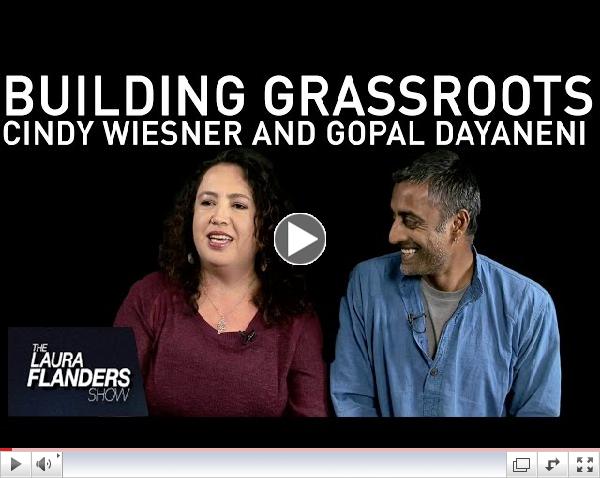 | |
After the Climate March: Laura Flanders with Gopal Dayaneni and Cindy Wiesner
|
|
How Racism Created America's Chinatowns
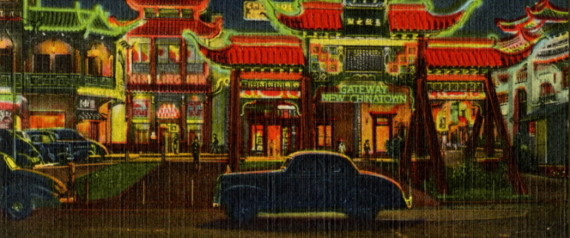
By Braden Goyette Huffington Post
Last month, a San Francisco tour guide was caught in a racist rant about the city's Chinatown, berating residents for "eating turtles and frogs" and for not assimilating into American culture.
There's an irony to these grievances, considering that Chinatowns in the U.S. sprang up in large part because of anti-Chinese racism, and because of legal barriers that prevented assimilation.
At their height, there were dozens of Chinatowns, in big metro areas like Los Angeles and Chicago and in smaller cities like Cleveland and Oklahoma City. You might think of these neighborhoods as places to eat dim sum and buy knickknacks, but the reasons they initially formed are much more complex -- and political.
Chinese immigrants congregated together in part because of intense anti-Chinese attacks.
Seeking economic opportunity during the Gold Rush and the building of the transcontinental railroad, the first wave of Chinese immigrants arrived in the U.S. in the mid-1800s. The first Chinatowns sprang up on the West Coast and were, at the start, much like ethnic settlements founded by European immigrant groups.
These immigrants were paid lower wages than white workers, who then blamed Chinese laborers for driving down pay and taking away jobs. After the railroad was completed and white laborers in other industries began to fear for their jobs, anti-Chinese attacks increased, including beatings, arson and murder.
In Rock Springs, Wyoming, 150 armed white miners drove Chinese immigrants out of town in 1885 by setting fire to their homes and businesses and murdering 28 people. No one was charged in the massacre. It was hardly an isolated incident; 153 anti-Chinese riots erupted throughout the American West in the 1870s and 1880s, with some of the worst episodes of violence in Denver, Los Angeles, Seattle and Tacoma, Washington.
Many Chinese immigrants moved east to escape the attacks, explains Beatrice Chen, public programs director for the Museum of Chinese in America, located in New York. "That's really how Chinatowns on the East Coast got their start," she tells HuffPost. At the same time, Chinese immigrants who remained on the West Coast sought safety in numbers in the Chinatowns there.
The Exclusion Act of 1882 created significant legal barriers to Chinese immigrants' assimilation.
Around the turn of the century, politicians played into white workers' anxieties, pointing the finger at Chinese immigrants for economic hardship and labeling them fundamentally incapable of assimilation into U.S. society.
In 1877, a congressional committee heard testimony that the Chinese "are a perpetual, unchanging, and unchangeable alien element that can never become homogenous; that their civilization is demoralizing and degrading to our people; that they degrade and dishonor labor; and they can never become citizens."
Congress passed the Chinese Exclusion Act in 1882, barring Chinese immigrants who were already in the U.S. from becoming citizens and restricting new immigration from China. The law marked the first time that the U.S. restricted immigration explicitly on the basis of race....(Click title for more)
|

From Muftah
Nov 10, 2014 - After only two hours of jury deliberations, Palestinian-American activist, Rasmea Odeh, has been convicted of "unlawful procurement of naturalization" for failing to disclose that she was conviction by an Israeli military court, forty-five year ago, on dubious and discredited terrorism charges.
The conviction came after Odeh was kidnapped, tortured, and raped by Israeli soldiers, who induced her to confess to a crime she denied committing. Though she renounced the forced confession, an Israeli court convicted Odeh anyway and sentenced her to life in prison. She was eventually released in a prisoner exchange and immigrated to the United States in 1995. Journalist Charlotte Silver recently recounted these events in a piece for the Nation:
When she was 21, in 1969, Odeh was arrested in the middle of the night by Israeli soldiers at her home, and for twenty-five days her interrogators tortured her. She was beaten from head to toe with sticks and metal bars; her body, including genitalia and breasts, was subjected to electric shocks after she was forced to watch a male prisoner tortured to death in this very way. All the while, she was told she would die if she did not confess. But it was not until they brought in her father, threatening to force him to rape her, that she agreed to sign a confession stating that she had helped orchestrate two explosions in West Jerusalem that killed two civilians. Even then, her torturers raped her with a thick wooden stick.
Standing before a military court less than one month later, Odeh renounced the confession. But the panel of judges ignored that, and Odeh was sentenced to ten years plus life in prison. Ten years later, she was released in a prisoner exchange, along with seventy-five other Palestinians. That same year, in 1979, Odeh traveled to Geneva, where she described to the United Nations precisely how she came to be convicted of terrorism by Israel. In the years following, Odeh lived in Lebanon and Jordan, where she obtained a law degree. In 1995 she immigrated to the United States, joining her brother and father, both US citizens, and the large Arab-American communities in Detroit and, later, Chicago.
Odeh did not divulge the conviction on her U.S. naturalization papers or to immigration representatives, before being granted citizenship in 2004. About a year ago, she was arrested by officials from the Department of Homeland Security and charged with unlawfully obtaining her naturalization, a crime that carries anywhere from probation to ten years in jail.
But for the U.S. government's active pursuit of Palestinian, Arab, and Muslim activists since 9/11, Odeh's Israeli court case may never have been discovered. As Silver recounts, Odeh's prosecution came as a result of the government's dogged (and baseless) efforts to find grounds for bringing terrorism charges against Palestinian and Arab activists, as well as the Arab American Action Network (AAAN), where Odeh serves as associate director:
Odeh's indictment is the sole fruit the government managed to harvest from an investigation into a group of Palestinian and Palestine solidarity activists in the Chicago area that began in January 2010. In September of that year, the FBI conducted simultaneous raids on the homes of seven community and political activists in the Chicago area, seizing their computers with search warrants that stated they were looking for hints of "material support for terrorism." The raid led to a grand jury subpoena of twenty-three other activists, as well as a subpoena of AAAN records.
. . .
The government reportedly suspected AAAN of being a front for the Popular Front for the Liberation of Palestine, which, like Hamas, has been designated by the US government as a terrorist organization. And while the government never found any evidence of support for the PFLP when it cast its wide net over Palestinian activists, it did find Rasmea Odeh.
The politically-charged nature of this case did not end with Odeh's indictment. The presiding judge in her trial, which began on November 4 in a Detroit courthouse, made evidentiary rulings that ensured the jury would only hear one side of the story. Judge Gershwin Drain forbid Odeh from testifying about the torture that led to her forced confession. As the basis for this decision, the judge said he did not want to "retry the case" of 1969. At the same time, however, Judge Drain allowed the prosecution to present nearly 100 Israeli documents used to convict Odeh in 1969. Of course, by letting this evidence in but denying Odeh the opportunity to rebut her conviction, the judge not only did what he said he did not want to do, namely retry the earlier case, but also ensured its outcome would be favorable to the U.S. government. Based on his comments after the jury returned its verdict, it appears the judge intended this result:...(Click title for more)
|

By Liam O'Ceallaigh
Films for Action via Walkingbutterfly.com
Take a look at this picture. Do you know who it is?
Most people haven't heard of him.
But you should have. When you see his face or hear his name you should get as sick in your stomach as when you read about Mussolini or Hitler or see one of their pictures. You see, he killed over 10 million people in the Congo.
His name is King Leopold II of Belgium.
He "owned" the Congo during his reign as the constitutional monarch of Belgium. After several failed colonial attempts in Asia and Africa, he settled on the Congo. He "bought" it and enslaved its people, turning the entire country into his own personal slave plantation. He disguised his business transactions as "philanthropic" and "scientific" efforts under the banner of the International African Society. He used their enslaved labor to extract Congolese resources and services. His reign was enforced through work camps, body mutilations, executions, torture, and his private army.
Most of us - I don't yet know an approximate percentage but I fear its extremely high - aren't taught about him in school. We don't hear about him in the media. He's not part of the widely repeated narrative of oppression (which includes things like the Holocaust during World War II). He's part of a long history of colonialism, imperialism, slavery and genocide in Africa that would clash with the social construction of the white supremacist narrative in our schools. It doesn't fit neatly into a capitalist curriculum. Making overtly racist remarks is (sometimes) frowned upon in polite society, but it's quite fine not to talk about genocides in Africa perpetrated by European capitalist monarchs.
Mark Twain wrote a satire about Leopold called "King Leopold's soliloquy; a defense of his Congo rule", where he mocked the King's defense of his reign of terror, largely through Leopold's own words. It's 49 pages long. Mark Twain is a popular author for American public schools. But like most political authors, we will often read some of their least political writings or read them without learning why the author wrote them (Orwell's Animal Farm for example serves to re-inforce American anti-Socialist propaganda, but Orwell was an anti-capitalist revolutionary of a different kind - this is never pointed out). We can read about Huck Finn and Tom Sawyer, but King Leopold's Soliloquy isn't on the reading list. This isn't by accident. Reading lists are created by boards of education in order to prepare students to follow orders and endure boredom well. From the point of view of the Education Department, Africans have no history.
When we learn about Africa, we learn about a caricaturized Egypt, about the HIV epidemic (but never its causes), about the surface level effects of the slave trade, and maybe about South African Apartheid (which of course now is long, long over). We also see lots of pictures of starving children on Christian Ministry commercials, we see safaris on animal shows, and we see pictures of deserts in films and movies. But we don't learn about the Great African War or Leopold's Reign of Terror during the Congolese Genocide. Nor do we learn about what the United States has done in Iraq and Afghanistan, potentially killing in upwards of 5-7 million people from bombs, sanctions, disease and starvation. Body counts are important. And we don't count Afghans, Iraqis, or Congolese....(Click title for more)
|
 By Douglas Heselgrave By Douglas Heselgrave
Paste Magazine
Nov 11, 2014 - For music collectors of a certain age, the release of 'The Basement Tapes Complete' has been a long time coming, and the opportunity to hear everything that Bob Dylan and his friends recorded at a rented house in upstate New York in 1967 is the realization of a decades-old dream.
Advance press has touted the issuing of this six-CD set as having the significance of finding the Holy Grail or discovering the lost city of Atlantis. I'd settle for calling it the most significant musical event of the year, but I realize that people coming late to the party might wonder what all the fuss is about. In light of this, I've been trying to imagine what this music would sound like to someone who came upon it without any sense of context or cultural history.
Drop any of the six discs into a CD player, and you'll be immediately overwhelmed by the hiss of the tape sound, the hollow mono and a pesky organ residing far too close to the microphone. On some tracks Dylan's vocals are no more prominent than the tambourine or any of the other random instrumental sounds rising and falling in the mix.
For all intents and purposes, much of what the musicians play sounds no more professional than what you would hear emanating from any number of basement jams taking place anywhere in the world. Of course, that's part of the magic.
But, still, why do some of the songs suddenly end in the middle of a verse? Why can't Dylan sing the same song the same way twice? And why devote six crammed CDs, two books and a heckuva lot of academic interpretation to these guys' musical-and sometimes downright unmusical-ramblings from way back in 1967?
If you were around then, or have taken in any of the mythology from that time, you know that 1967 was supposed to be the summer of love. Psychedelic music was peaking, and The Beatles had just issued Sgt. Pepper's Lonely Heart's Club Band. Cream was riding the top of the charts and Human Be-Ins popped up everywhere, encouraging people to "tune in, turn on and drop out."
At a time when rock musicians started spending six months in the studio to produce their "masterpieces," complete with electronic effects, backwards-running tape and lyrics about peace, love, LSD and 1,000 armed Kalis, Bob Dylan and his pals (soon to be called "The Band") were playing Hank Williams and A.P. Carter tunes in a basement with only sleeping dogs as witnesses. While Pink Floyd and The Grateful Dead were developing their light shows, Bob Dylan was typing off-the-cuff lyrics on an old typewriter and creating songs that anticipated the alt-country movement three decades before it happened.
The music on The Basement Tapes Complete is so simple and uncluttered that it was truly revolutionary when it was first heard. It's impossible to sidestep the irony of the situation.
By the time other musicians and the music-buying public had caught up with what Dylan was creating, and albums like Blonde on Blonde and Highway 61 Revisited encouraged all manner of psychedelic explorations, he'd lost interest. Dylan had brought his music full-circle by following his intuition and deciding to play and record without any intention other than to blow off steam and have a good time. Once again, he was ahead of the curve as he showed people what "dropping out" was really about. By 1967, the counterculture had been co-opted by the media and the corporations and had given way to consumerist symbols and beaded, peace-sign variations of conformity....(Click title for more)
|

Ava DuVernay's politically astute, psychologically acute MLK biopic makes the civil rights movement seem like only yesterday.
By Scott Foundas
Variety
Nov. 12, 2014 - A half-century on from Martin Luther King Jr.'s historic voting-rights march from Selma, Alabama to the state capitol in Montgomery, director Ava DuVernay revisits those events with startling immediacy, dramatic force and filmmaking verve in "Selma."
A far cry from the dutiful biopic or ossified history lesson it could have become in lesser hands (or the campy free-for-all the project's original director, Lee Daniels, might have made of it), DuVernay's razor-sharp portrait of the civil rights movement - and Dr. King himself - at a critical crossroads is as politically astute as it is psychologically acute, giving us a human-scale King whose indomitable public face belies currents of weariness and self-doubt.
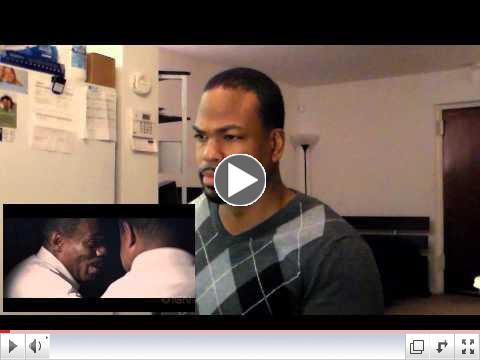 | Selma - Trailer
|
Bolstered by Paul Webb's literate, well-researched script and David Oyelowo's graceful, majestic lead performance, DuVernay has made the kind of movie that gives year-end "prestige" pics a good name, which should equate to considerable box-office and awards-season gold for this Dec. 25 Paramount release.
While King has figured as a peripheral character in many civil-rights-themed dramas including Spike Lee's "Malcolm X," "The Long Walk Home" (about the Montgomery bus riders' boycott) and the recent "The Butler," the only attempt at a full-fledged King biopic to date was the three-part 1978 TV miniseries "King," starring Paul Winfield in the title role. Probably, the sheer enormity of King's life and achievements seemed a daunting subject for any one movie to convey, but it's a task "Selma" ably tackles by focusing on a piece of King's story that feels representative of the whole. The microcosmic approach recalls playwright Tony Kushner's script for Spielberg's "Lincoln," a movie "Selma" also resembles in its fascination with the mix of politics, showmanship and media manipulation by which real change gets accomplished in America. But in the end, "Selma" may be the more impressive achievement in its effortless balance of the intimate and epic, and its notable absence of great-man mythmaking.
As depicted here, the Selma-to-Montgomery march (or, rather, marches) came at a crucial juncture in the civil rights movement, when the stubborn persistence of leaders like King had done much to turn the tide of race relations in America in theory, if not in practice. While the landmark 1964 Civil Rights Act had legally desegregated the South, towns like Selma remained very dangerous places to be a black man or woman, with Jim Crow discrimination still in effect, especially with regard to the contentious subject of voter registration. Throughout the South, majority-black voting districts showed minuscule percentages of registered blacks and disproportionately large numbers of whites (often due to the names of dead or relocated residents being left on the voting rolls), while white police and voting officials employed a wide range of arcane laws and intimidation tactics to discourage black citizens from even attempting to register. And under the leadership of the racist Gov. George Wallace (Tim Roth), Alabama was hardly inclined to change....(Click title for more)
|
|
Keep up with the Moral Mondays with a Red Resolution...
Become a CCDS member today!
 The time is long past for 'Lone Rangers'. Being a socialist by your self is no fun and doesn't help much. Join CCDS today--$36 regular, $48 household and $18 youth. The time is long past for 'Lone Rangers'. Being a socialist by your self is no fun and doesn't help much. Join CCDS today--$36 regular, $48 household and $18 youth.
Better yet, beome a sustainer at $20 per month, and we'll send you a copy of Jack O'Dell's new book, 'Climbing Jacobs Ladder,' drawing on the lessons of the movement in the South in the 1950s and 1960s.
Solidarity, Carl Davidson, CCDS
|
|
|